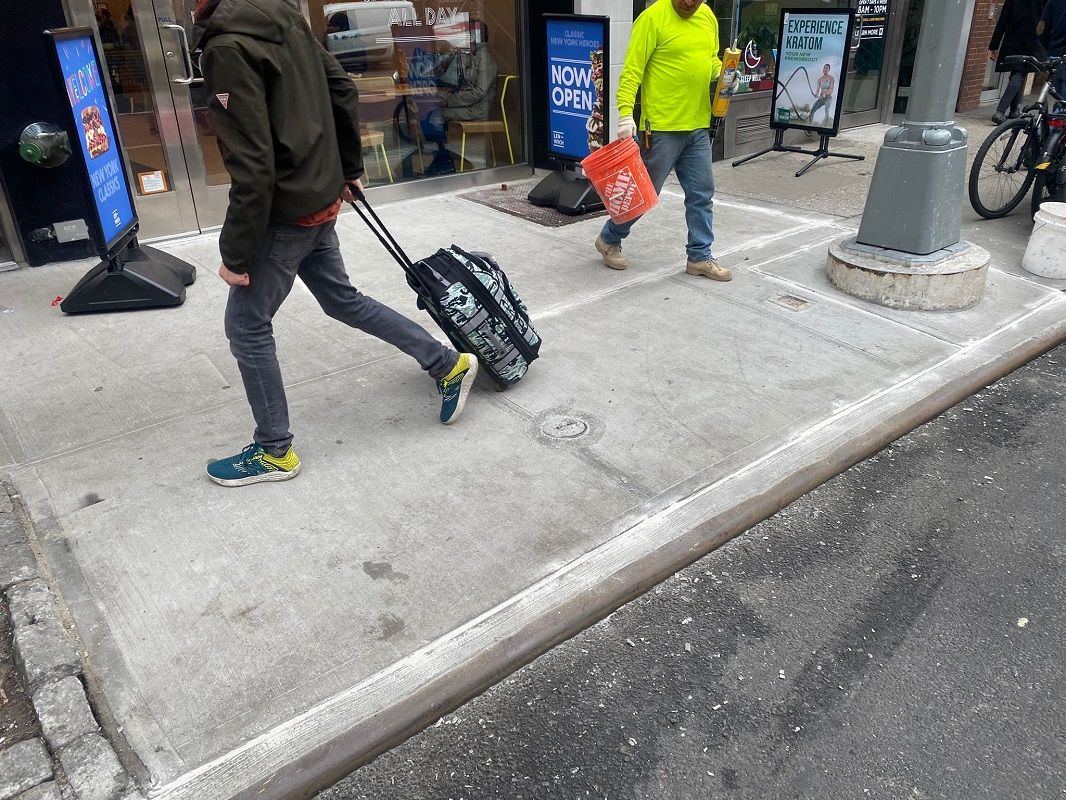
Sidewalk Repair Nyc: A Guide to Fixing Damaged Sidewalks

Sidewalks are an essential part of every city's infrastructure, allowing people to walk safely and comfortably around town. However, over time, sidewalks can become damaged due to wear and tear, weather conditions, or even accidents. This can lead to potential safety hazards for pedestrians, liability issues for property owners, and even legal repercussions. In this article, we will provide you with a comprehensive guide to sidewalk repair in NYC, including the common types of sidewalk damage, the repair process, and tips for avoiding future damage.
Common Types of Sidewalk Damage
The following are the most common types of sidewalk damage that can occur in NYC:
Cracks
Cracks are a common type of sidewalk damage that can occur due to weather conditions, heavy traffic, or the natural settling of the soil beneath the sidewalk. Small cracks may not seem like a big deal, but they can quickly become larger and more hazardous if left unattended.
Potholes
Potholes are typically caused by heavy traffic or the freeze-thaw cycle of winter weather. They are more common in high-traffic areas and can become a tripping hazard for pedestrians.
Unevenness
Unevenness is caused by the settling of soil beneath the sidewalk or damage from tree roots. This can lead to an uneven surface that is dangerous for pedestrians, especially those with mobility issues.
Tree Roots
Tree roots can cause significant damage to sidewalks, especially if the tree was planted too close to the sidewalk or was not properly maintained. As the roots grow, they can push up and crack the concrete, creating a safety hazard.
Repair Process for Sidewalk Damage
If your sidewalk has suffered any of the above types of damage, it is important to have it repaired as soon as possible. The following is a general outline of the NYC sidewalk repair process:
Permitting
Before any repair work can begin, property owners must obtain a sidewalk repair permit from the NYC Department of Transportation (DOT). This includes a fee and an inspection by a DOT representative.
Removal of Damaged Concrete
Once the permit is obtained, the damaged concrete must be removed and disposed of properly. This process can be noisy and dusty, so it is important to inform your neighbors ahead of time.
Excavation and Base Preparation
The area where the concrete will be poured must be excavated and prepared properly, including the installation of any necessary forms or reinforcement.
Concrete Pouring and Finishing
After the base is prepared, fresh concrete is poured and leveled. It is important to use the correct concrete mix and finishing techniques to ensure the sidewalk is smooth and level.
Curing
The concrete must be allowed to cure properly before it can be used. This can take up to a week or more, depending on weather conditions.
Tips for Avoiding Future Sidewalk Damage
To avoid future sidewalk damage, follow these tips:
Regular Maintenance and Cleaning
Regular maintenance and cleaning can prevent small issues from turning into larger ones. Sweeping your sidewalk regularly and repairing small cracks.
Proper Drainage
Ensuring proper drainage can prevent water from accumulating and causing damage to the sidewalk. Make sure that the ground slopes away from the sidewalk, and install proper drainage if necessary.
Avoiding Heavy Loads
Heavy loads, such as large vehicles, can cause significant damage to sidewalks. If possible, avoid driving or parking heavy vehicles on your sidewalk.
Careful Tree Planting
When planting trees near your sidewalk, make sure to choose species that have non-invasive root systems and plant them a safe distance away from the sidewalk. It is also important to properly maintain trees to prevent root growth from causing damage.
Conclusion
Damaged sidewalks can pose a serious safety hazard for pedestrians and can result in legal and financial consequences for property owners. By understanding the common types of sidewalk damage, the repair process, and tips for avoiding future damage, you can ensure that your sidewalk remains safe and in good condition.
FAQs
How do I obtain a permit for sidewalk repair in NYC?
A: To obtain a permit for sidewalk repair in NYC, you must contact the NYC Department of Transportation and schedule an inspection.
How much does sidewalk repair cost in NYC?
A: The cost of sidewalk repair in NYC can vary depending on the extent of the damage and the specific repair needed. Property owners should obtain multiple quotes from licensed contractors before making a decision.
How long does it take to repair a damaged sidewalk in NYC?
A: The time it takes to repair a damaged sidewalk in NYC can vary depending on the extent of the damage, weather conditions, and the availability of contractors. It is important to plan ahead and allow for sufficient time for repairs to be completed.
Can I repair my sidewalk myself?
A: It is not recommended to attempt to repair your sidewalk yourself, as it requires specialized equipment and knowledge of proper techniques. It is best to hire a licensed contractor who has experience with sidewalk repair.
What should I do if I notice sidewalk damage in my neighborhood?
A: If you notice sidewalk damage in your neighborhood, you should report it to the NYC Department of Transportation. You can do this online or by calling 311.
Appreciate the creator